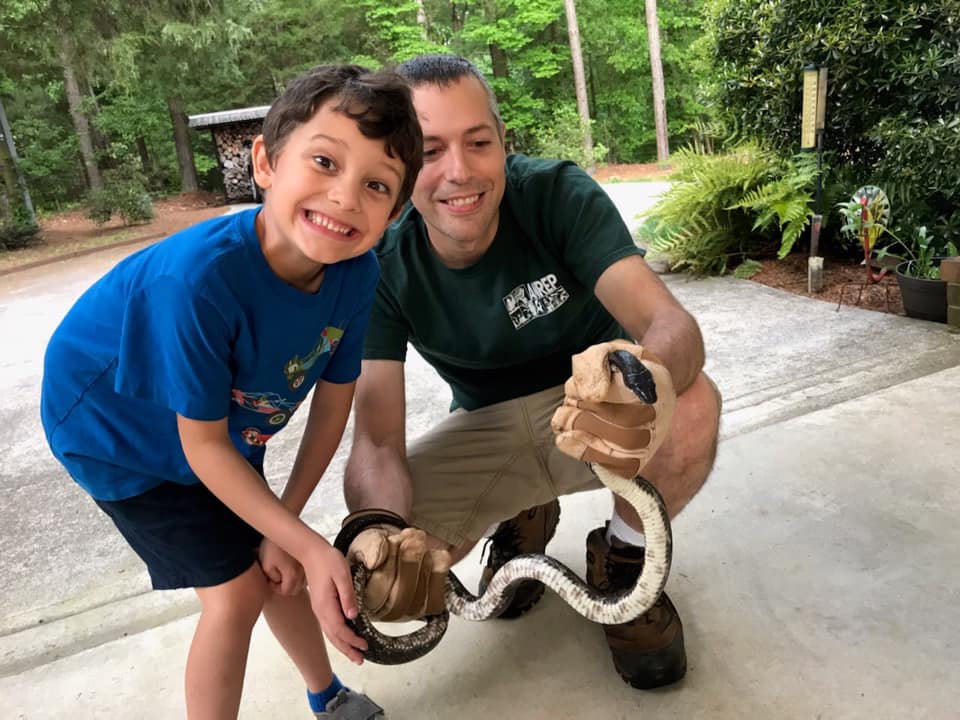What would you do if you found a snapping turtle or a 6 ft. snake in your backyard? This time of year, we get many of these kinds of wildlife questions at the County Extension office. Reptiles are emerging from their winter slumber to find food and a future mate.
It is interesting to note that some people find these wildlife encounters terrifying and others find them intriguing. Those that are terrified often want to know how to get these animals out of their yard, usually to protect their pets or children. Those that find them intriguing want to know what kind of snake they encountered and whether it’s a good snake or a venomous snake.

No matter which side of the spectrum you fall, the University of Georgia has several excellent references to answer all your wildlife questions. For information about reptiles and amphibians of Georgia, check out the UGA Savannah River Ecology website: https://srelherp.uga.edu/herps.htm. This website has pictures and descriptions of every species of snake, turtle, lizard, frog, alligator, and salamander that’s known to occur in Georgia. There are also distribution maps that show where each species is commonly found.
Here are some interesting facts about the common snapping turtle found throughout Georgia. Although generally docile in water, common snapping turtles will strike viciously if captured or cornered out of water. They mate April – November and typically deposit 20 – 40 eggs in concave nests dug by the female. Common snapping turtles are omnivores, taking a wide variety of vertebrate and invertebrate prey, as well as aquatic vegetation. The common snapping turtle is not protected and is considered locally abundant in Georgia. In some areas it is harvested for food.
One of the most common non-venomous snakes in Georgia is the rat snake. There are black rat snakes, gray rat snakes, and yellow (greenish colored) rat snakes found in Georgia. Adult rat snakes are typically 3-5 ft., but large individuals may be more than 6 ft. long. They are commonly found in abandoned buildings and barns and are often the most common large snake in suburban areas. Adult rat snakes primarily eat mice, rats, squirrels, and birds, as well as bird eggs. Rat snakes are constrictors, and adept climbers that can scale brick walls as well as tree trunks. When frightened, they often assume a “kinked” posture and remain motionless. This species is protected throughout the state of Georgia—which means it’s illegal to kill them.
Any animal can easily become agitated and will likely strike (or snap) at you in self-defense if you get too close. If you encounter a snake or snapping turtle, it’s usually wise to leave it alone and let it move along. Most animals are just passing through and probably won’t take up residence in a well-manicured yard. Relocating wild animals should be seen as a last resort. However, if one of these handsome reptiles ends up in your garage or cornered in your dog pen, it might be necessary to safely remove them from the situation.
The safest and easiest way to remove an animal is with a large trashcan. Lay the trashcan on the ground next to the snake or snapping turtle and use a long broom or shovel to gently guide them into the container. Secure the container tightly with a lid and carry them to the nearest stream, river, or pond for release. Admire these wonderful creatures from distance and appreciate the service they provide at keeping rodents and other nuisance wildlife in check.
###
Paul Pugliese is the Extension Coordinator and Agricultural & Natural Resources Agent for Bartow County Cooperative Extension, a partnership of The University of Georgia, The U.S. Department of Agriculture, and Bartow County. For more information and free farm, lawn, or garden publications, call (770) 387-5142 or visit our local website at ugaextension.org/bartow.
